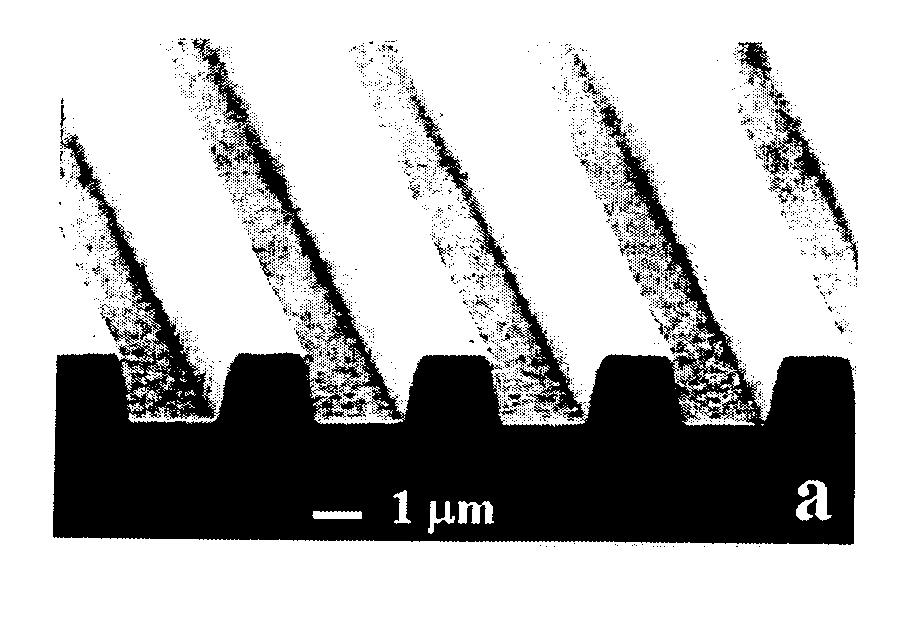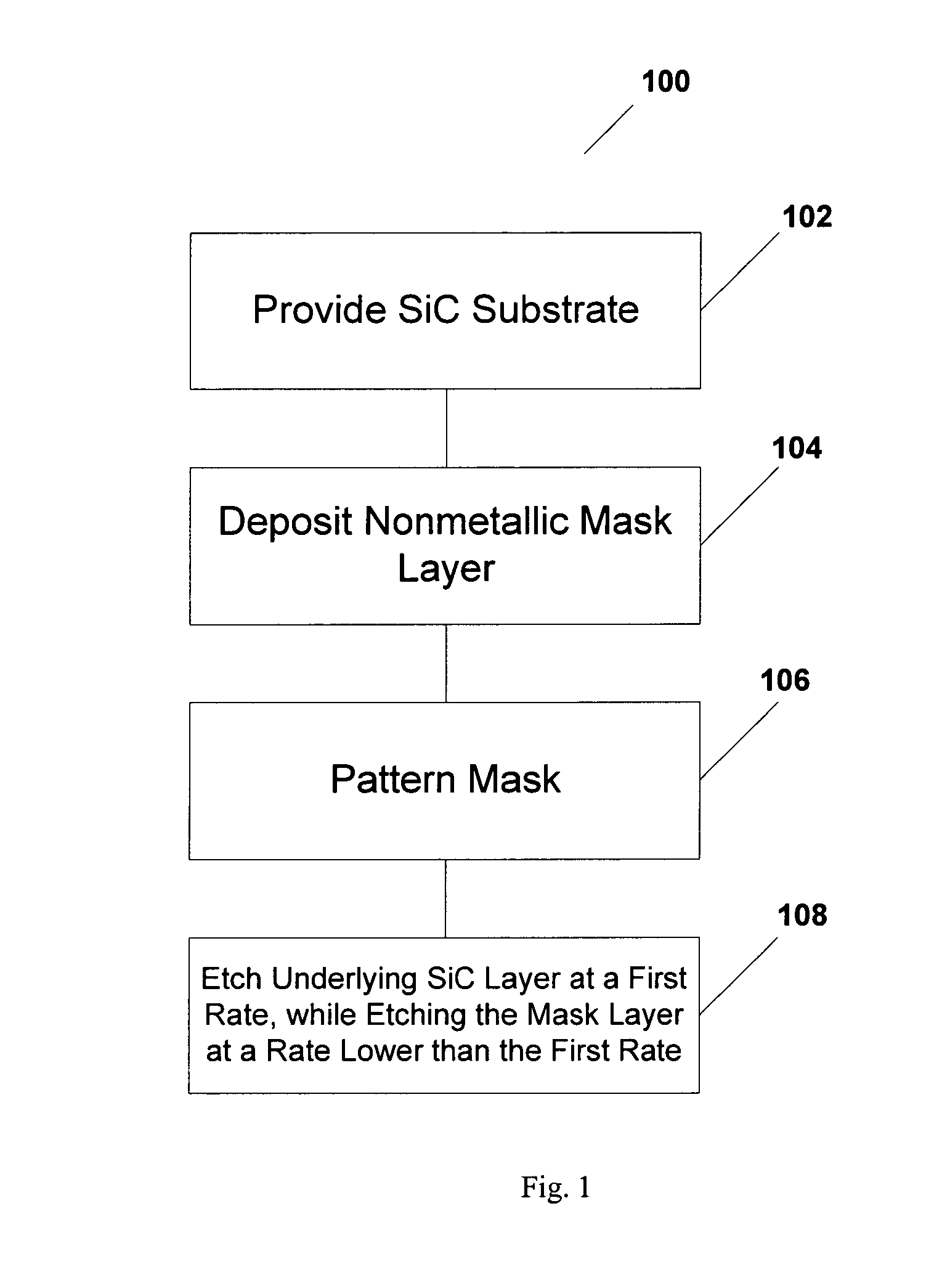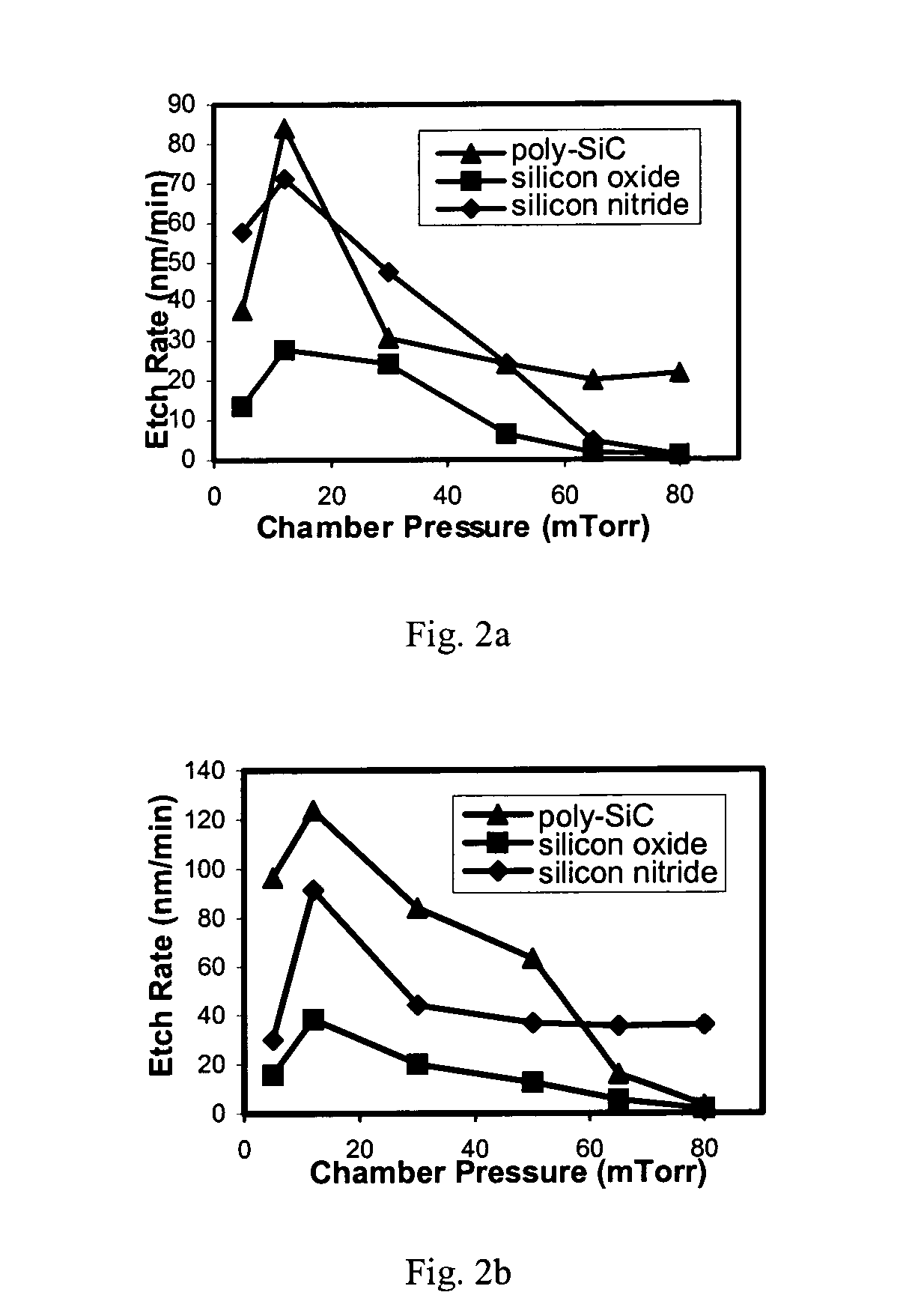Selective etching of silicon carbide films
a technology of silicon carbide and selective etching, which is applied in the direction of acceleration measurement using interia forces, instruments, coatings, etc., can solve the problems of poor control of lateral dimensions, special equipment, and difficult wet etching of si
- Summary
- Abstract
- Description
- Claims
- Application Information
AI Technical Summary
Problems solved by technology
Method used
Image
Examples
Embodiment Construction
[0016] Embodiments of the present invention are directed towards methods for etching SiC with a highly selective RIE process using a non-metallic mask layer. In certain embodiments, instead of using fluorinated gases, etching is performed using a hydrogen and bromine etch chemistry. This allows the use of non-metallic material such as silicon dioxide to mask a SiC substrate during the etch. In one aspect, the etching is performed using a hydrogen bromide (“HBr”) etch chemistry in a plasma chamber. An HBr etch chemistry has been used to etch silicon, but not silicon dioxide, silicon nitride or SiC. Conventional wisdom of those skilled in the art would teach away from using HBr to etch SiC, since SiC is a very stable material. In addition, it is generally expected that silicon dioxide or silicon nitride would etch at a faster rate than SiC. Because of this, HBr would not ordinarily be considered as an effective etchant against a stable material such as SiC. The present invention, howe...
PUM
| Property | Measurement | Unit |
|---|---|---|
| Power | aaaaa | aaaaa |
| Power | aaaaa | aaaaa |
| Power | aaaaa | aaaaa |
Abstract
Description
Claims
Application Information
 Login to View More
Login to View More - R&D
- Intellectual Property
- Life Sciences
- Materials
- Tech Scout
- Unparalleled Data Quality
- Higher Quality Content
- 60% Fewer Hallucinations
Browse by: Latest US Patents, China's latest patents, Technical Efficacy Thesaurus, Application Domain, Technology Topic, Popular Technical Reports.
© 2025 PatSnap. All rights reserved.Legal|Privacy policy|Modern Slavery Act Transparency Statement|Sitemap|About US| Contact US: help@patsnap.com



